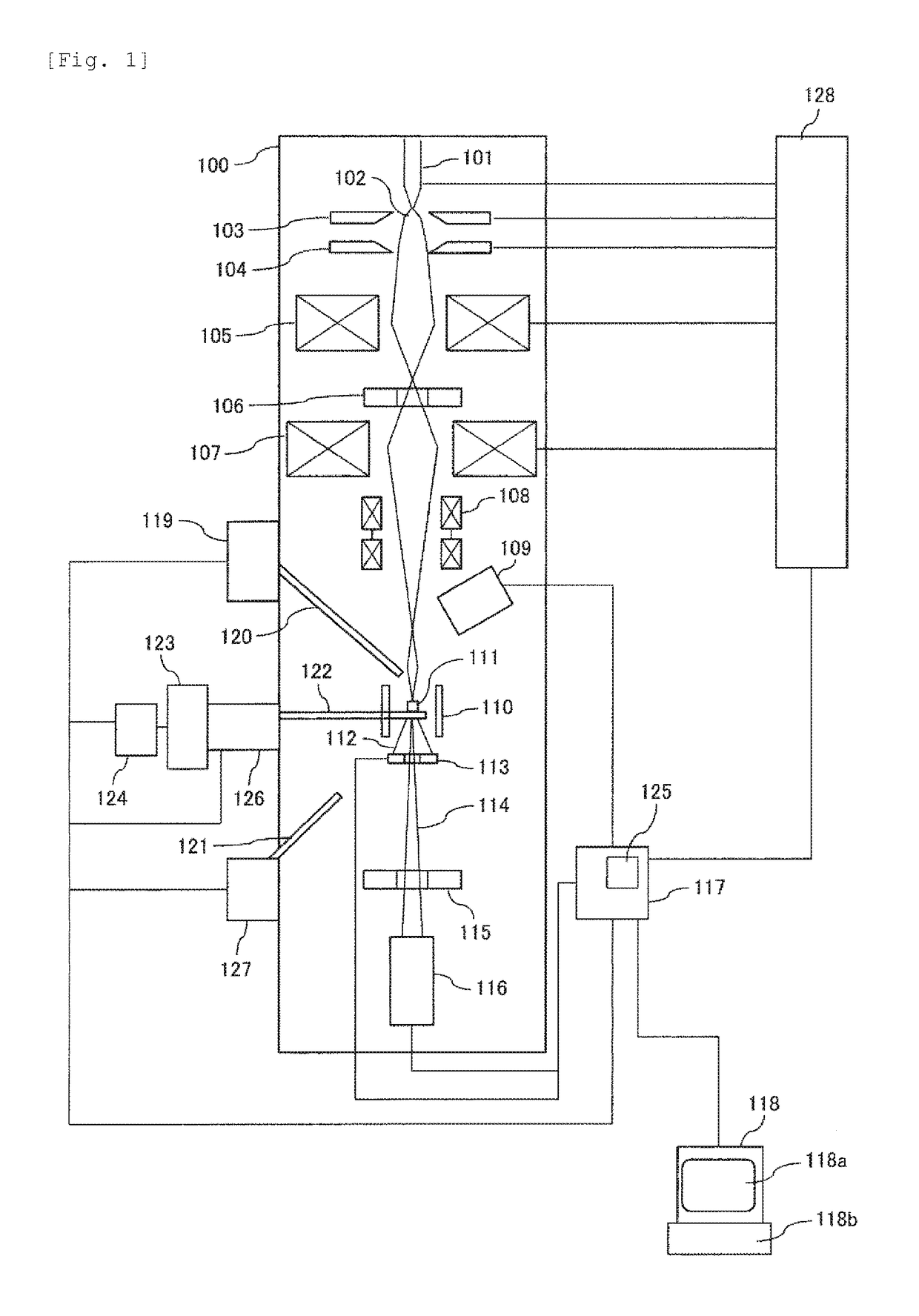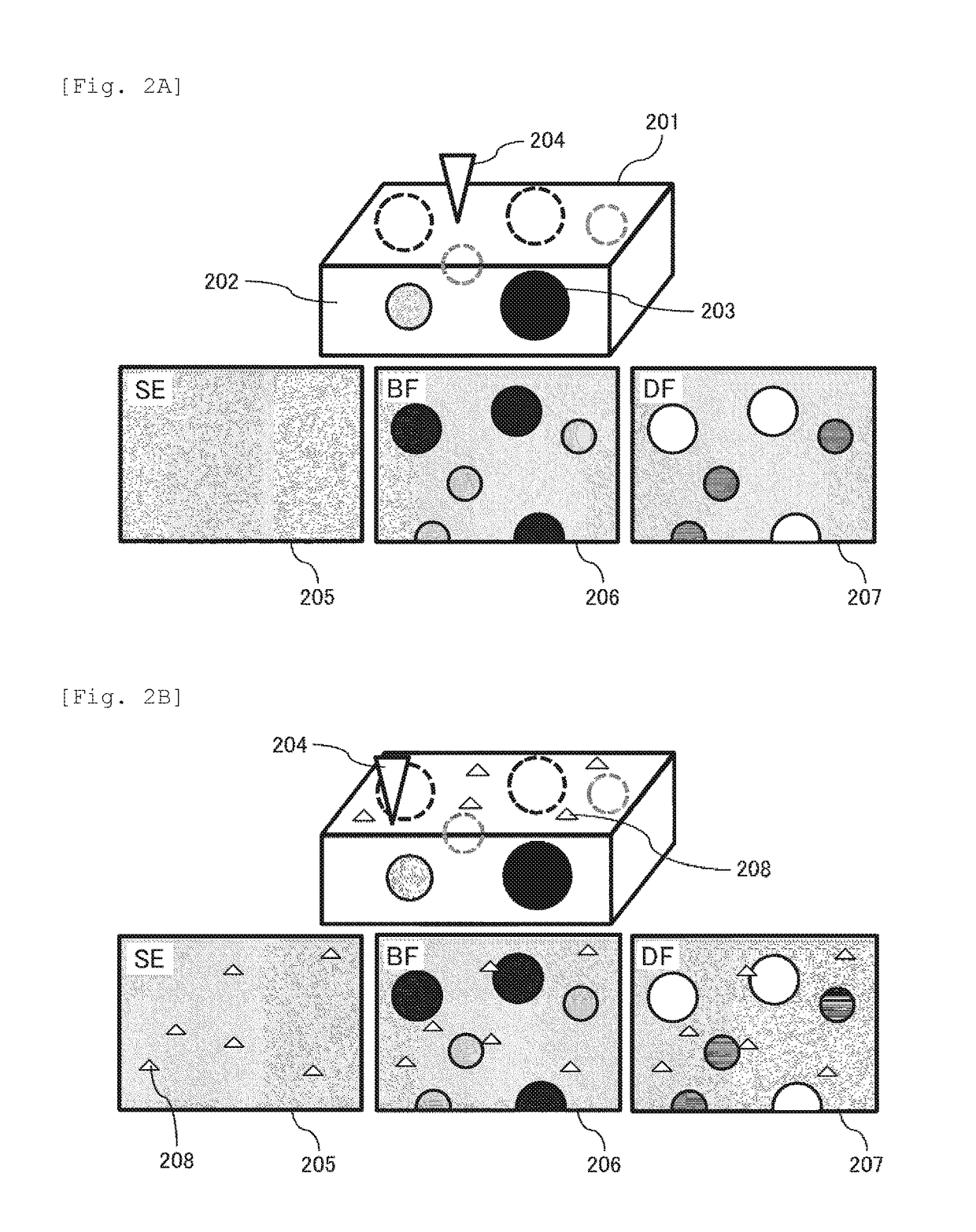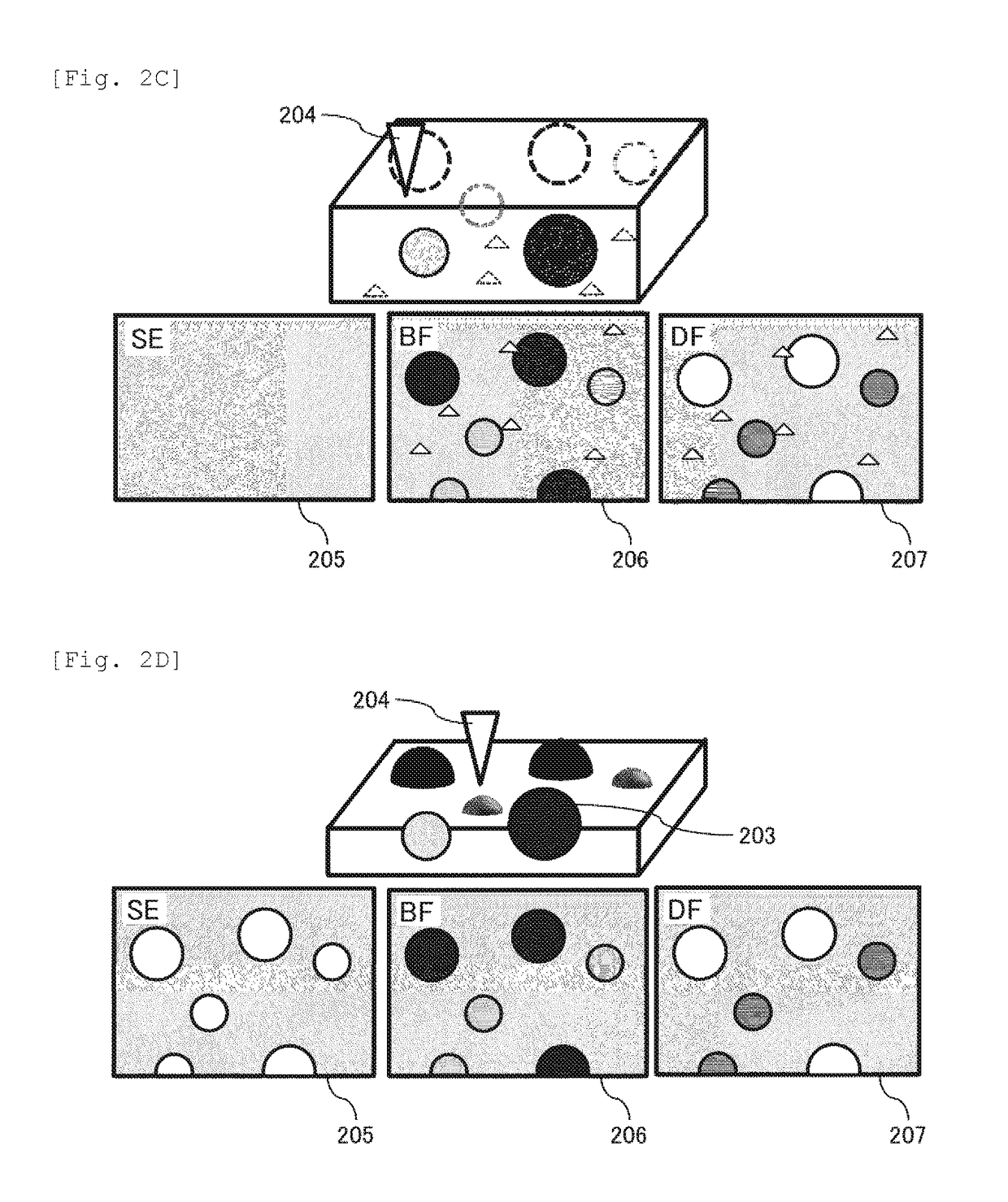Charged particle beam device, electron microscope and sample observation method
a charge particle and beam technology, applied in the direction of basic electric elements, electric discharge tubes, electrical equipment, etc., can solve the problems of inability to capture the original structure of biological tissue, protein contained in the sample may be destroyed, etc., and achieve the effect of stable observation and high accuracy
- Summary
- Abstract
- Description
- Claims
- Application Information
AI Technical Summary
Benefits of technology
Problems solved by technology
Method used
Image
Examples
example 1
[0045]TEM or STEM described in the literature of the Background art uses high-acceleration voltage with acceleration voltage of 80 kV to 300 kV. On the other hand, recently, an STEM detector has been attached to the SEM with acceleration voltage of 30 kV as maximum acceleration voltage, and it has been also possible to observe a transmission image at 30 kV.
[0046]In the present example, the basic embodiments of the present invention will be described. FIG. 1 is a diagram illustrating a basic configuration of a charged particle beam device according to the present example. In FIG. 1, a configuration of the SEM having the STEM detector and capable of observing an STEM image as an example of the charged particle beam device will be described. However, the present embodiment is not limited thereto, and it can be applied to, for example, the TEM or STEM having the SEM detector and capable of observing the SEM image.
[0047]The SEM illustrated in FIG. 1 is mainly configured to have an SEM le...
example 2
[0059]FIGS. 2A to 2E illustrate observation examples of samples produced by an ice embedding method.
[0060]FIG. 2A is a schematic view of a normal ice embedded sample and a schematic view of an observation result. In a sample 201 produced by the ice embedding method, a structure 203 is contained in an amorphous ice 202 while maintaining an original structure of the structure 203. When an electron beam 204 scans the sample 201, a secondary electron image (hereinafter, referred to as SE) 205 illustrates a surface of the amorphous ice 202 and unevenness information represented as a contrast change cannot be obtained. On the other hand, the structure 203 can be checked by contrast difference in a bright field image (hereinafter, referred to as BF) 206 or a dark field image (hereinafter, referred to as DF) 207 which is a transmitted electron signal.
[0061]FIG. 2B is an observation example in a case where a sample is contained in amorphous ice but a frost 208 is attached to a surface of the...
example 3
[0065]FIG. 3 is a diagram for explaining functions and processes of the image process control unit 125 of FIG. 1. The image process control unit 125 determines whether or not the frozen sample 111 is in an appropriate frozen state and controls a vacuum atmosphere in order to observe stably.
[0066]The frozen sample 111 such as an ice embedded sample is fixed to the sample cooling holder 122 and introduced into the SEM lens tube 100 at a temperature which can maintain a frozen state, for example, from −90° C. to −170° C. After the sample cooling holder 122 is introduced, a temperature and a degree of vacuum of the sample cooling holder 122, and a current position of the tip of the cold trap 120 are measured, and a result thereof is input to the image process control unit 125.
[0067]For example, measured results of the temperature and the degree of vacuum of the cooled sample holder 122 and the position of the cold trap 120 are respectively input to a holder temperature adjustment unit 3...
PUM
 Login to View More
Login to View More Abstract
Description
Claims
Application Information
 Login to View More
Login to View More - R&D
- Intellectual Property
- Life Sciences
- Materials
- Tech Scout
- Unparalleled Data Quality
- Higher Quality Content
- 60% Fewer Hallucinations
Browse by: Latest US Patents, China's latest patents, Technical Efficacy Thesaurus, Application Domain, Technology Topic, Popular Technical Reports.
© 2025 PatSnap. All rights reserved.Legal|Privacy policy|Modern Slavery Act Transparency Statement|Sitemap|About US| Contact US: help@patsnap.com



